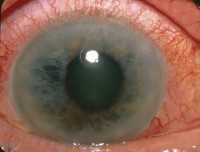11 Feb Several Genes Identified as Potential Biomarkers For Glaucoma
MedicalResearch.com Interview with:
Dr Shi Song Rong PhD and
Guy Li-Jia CHEN MBBS, MMed, MRCSEd (Ophth), PhD
Assistant Professor
Department of Ophthalmology & Visual SciencesPrince of Wales Hospital
Faculty of Medicine
The Chinese University of Hong Kong
Medical Research: What is the background for this study? What are the main findings?
Response: Glaucoma is a leading cause of irreversible blindness worldwide. Primary angle-closure glaucoma (PACG) as a major form of glaucoma accounts for about half of the cases blinded from the disease. So far, more than 50 genes/loci have been assessed for their associations with PACG and a wider spectrum of relevant conditions, primary angle-closure disease (PACD).
In the article, we summarize the statistical associations of individual genes varying across different study cohorts and conducted meta-analysis to evaluate the associations of 28 polymorphisms in 11 genes/loci with PACD and its subtypes, including PACG, primary angle-closure (PAC) and/or primary angle-closure suspect (PACS).
Thus, we affirmed the association of PACG and combined PACS/PAC/PACG with 10 polymorphisms in 8 genes/loci as potential biomarkers. Among them 3 were identified in the genome-wide association study (COL11A1,PLEKHA7 and PCMTD1-ST18), and 5 (HGF, HSP70, MFRP, MMP9 and NOS3) in candidate gene studies.

Photo showing conjunctival vessels dilated at the corneal edge (ciliary flush, circumcorneal flush) and hazy cornea characteristic of acute angle closure glaucoma: Wikipedia image
Medical Research: What should clinicians and patients take away from your report?
Response: This systematic review and meta-analysis highlighted multiple polymorphisms in 8 gene loci, namely COL11A1,HGF, HSP70, MFRP, MMP9, NOS3, PCMTD1-ST18 and PLEKHA7, as candidate genetic biomarkers for PACG and/or overall PACD. However, it is still too early to evaluate the diagnostic value of these markers. More genetic biomarkers for PACD are yet to be identified and functionally characterized to deepen our understanding about the molecular mechanisms underlying the disease. Nevertheless, the confirmation of these markers provides targets of further investigation into the disease pathways of PACD, which may eventually lead to discovery of new treatment modalities.
Medical Research: What recommendations do you have for future research as a result of this study?
Response: Thorough investigations into the genetic factors of PACD and its relevant phenotypes are warranted at the genomic scale and in targeted genomic region. Also, biological characterization of the affirmed susceptibility genes would enrich the understanding of the disease mechanisms and the development of new therapies.
Medical Research: Is there anything else you would like to add?
Response: In the meta-analysis, we found that some candidate genes had a strong association with PACG, e.g., HGF. However, the number of study cohorts included into the meta-analysis was small. Therefore, further replication studies in different study populations are warranted to confirm the roles of these genes in PACD.
Citation:
Genetic Associations of Primary Angle-Closure Disease
A Systematic Review and Meta-analysis
Ophthalmology DOI: http://dx.doi.org/10.1016/j.ophtha.2015.12.027
[wysija_form id=”5″]
Dr Shi Song Rong and Dr. Guy Li-Jia Chen (2016). Several Genes Identified as Potential Biomarkers For Glaucoma
Last Updated on February 11, 2016 by Marie Benz MD FAAD
